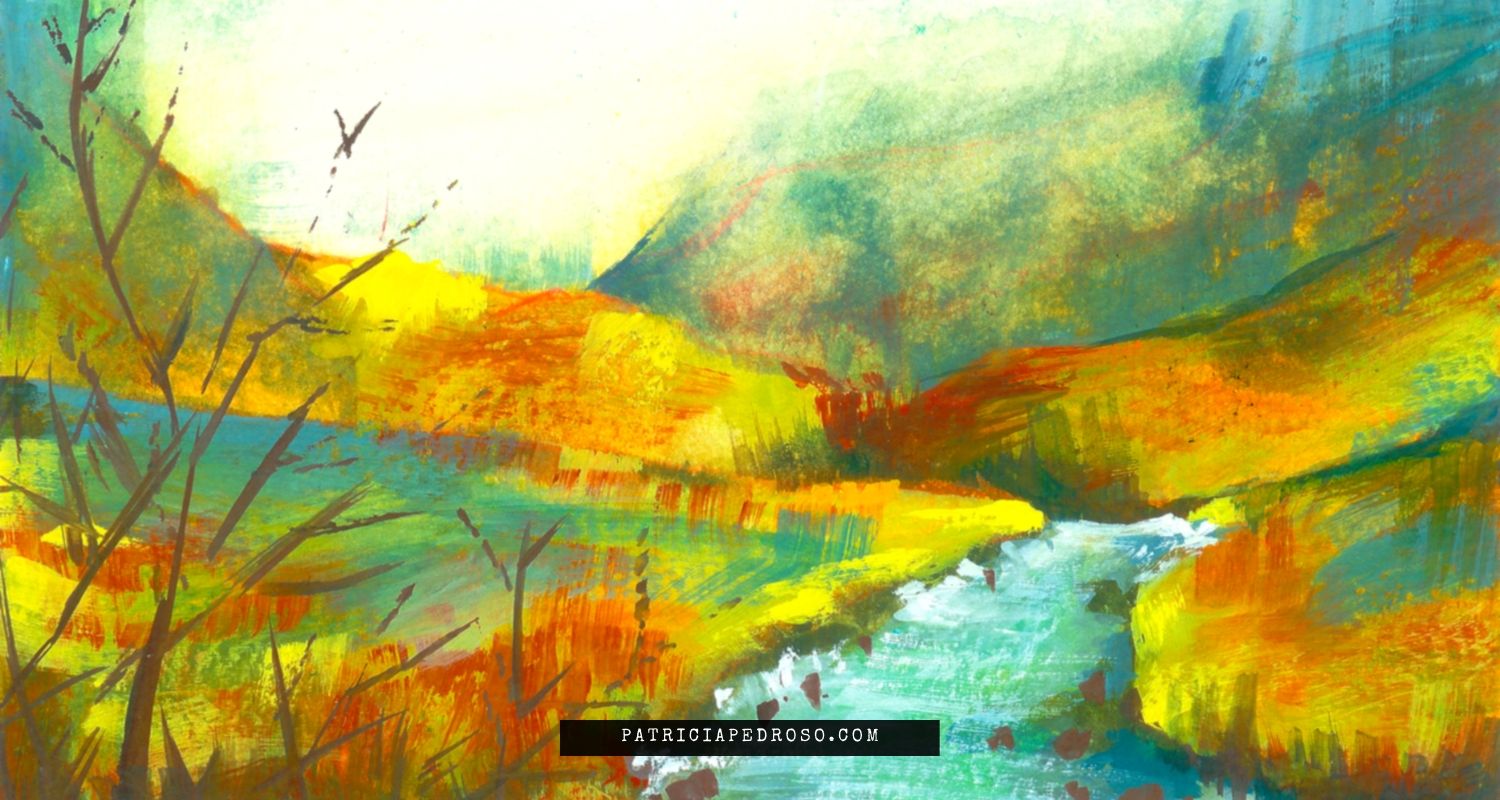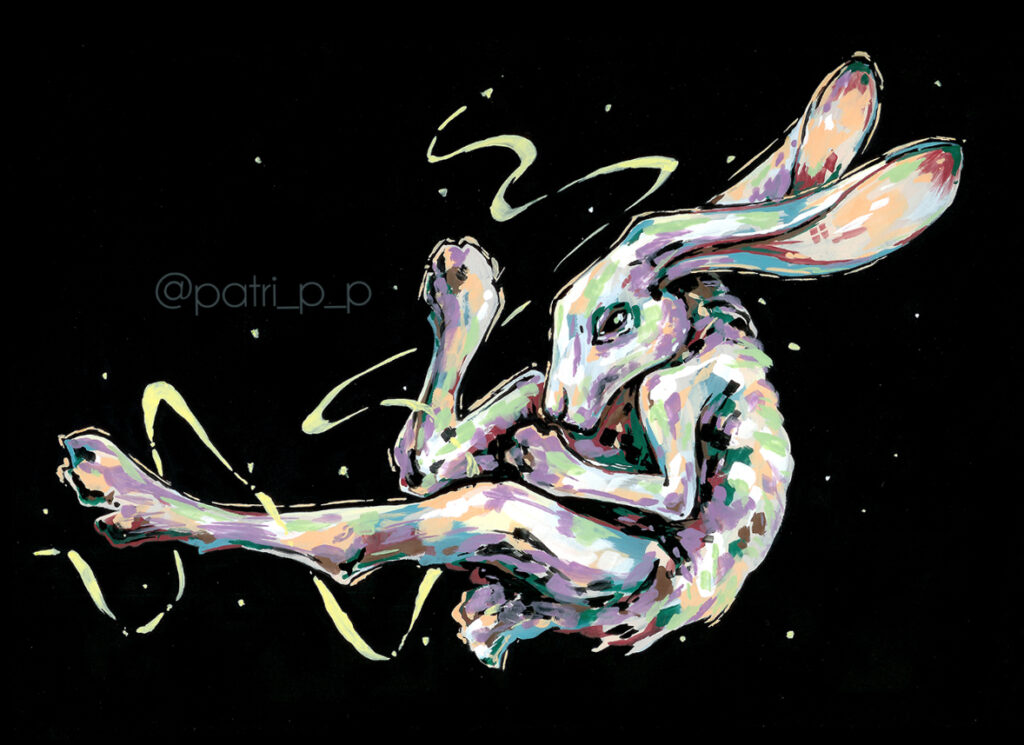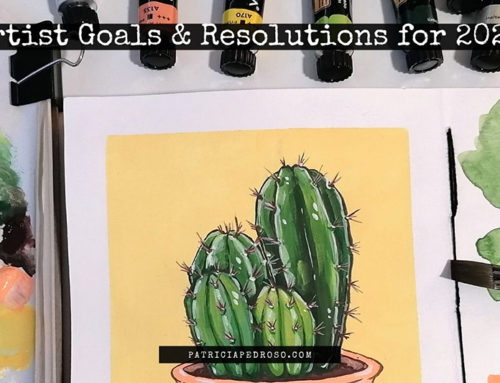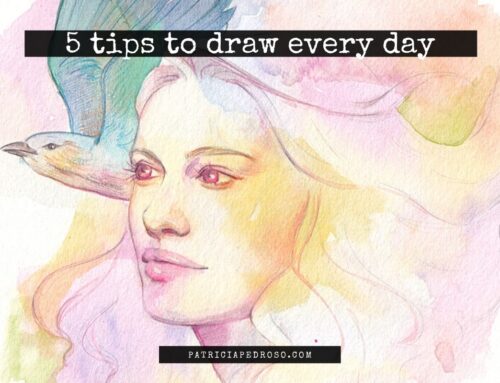With this small guide, you’ll grab your gouache paints with more confidence!
Gouache is an intimidating new media for most artists.
I didn’t even know it existed until one of my college teachers made us buy it for class and showed us how to use it.
It wasn’t such a great experience, truth to be told – I ended up pretty much hatting it.
But I already had spent quite a lot on a medium-high quality guache and I didn’t want it to go to waste.
I hate wasting art supplies.
Besides, as I’m studying Fashion Design, not Fine arts, they wanted to show us the more “commercial/graphic” way to use it.
The thing is, gouache is usually used to create solid spaces of colour.
And this is perfectly fine, but they did restrict our use of it to some of these absurd rules, just because “That’s the way you have to use it”.
I learned the rules, so I started experimenting on my own and I actually had a lot of fun.
But gouache is definitely a bit different from other mediums you might use.
So, anyway, let’s talk gouache!
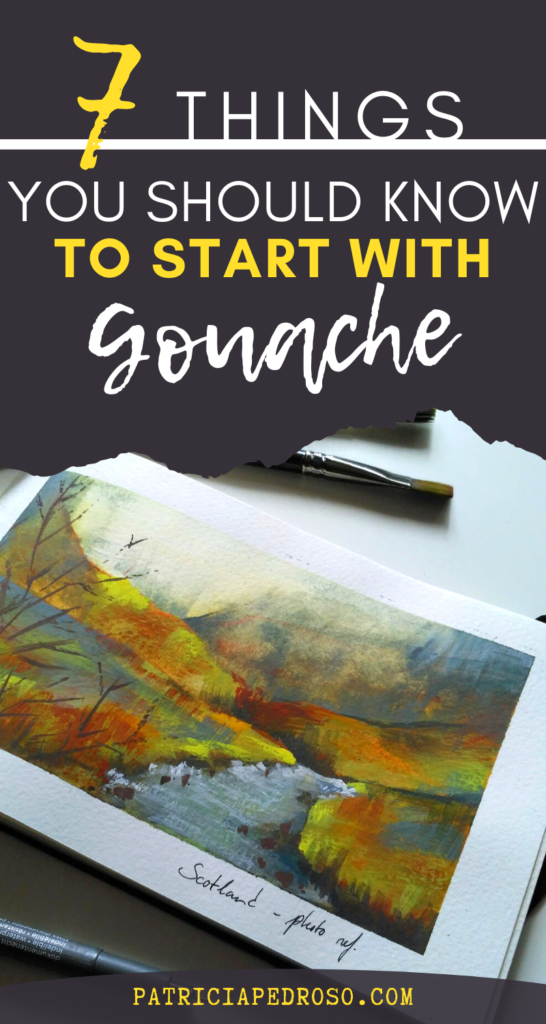
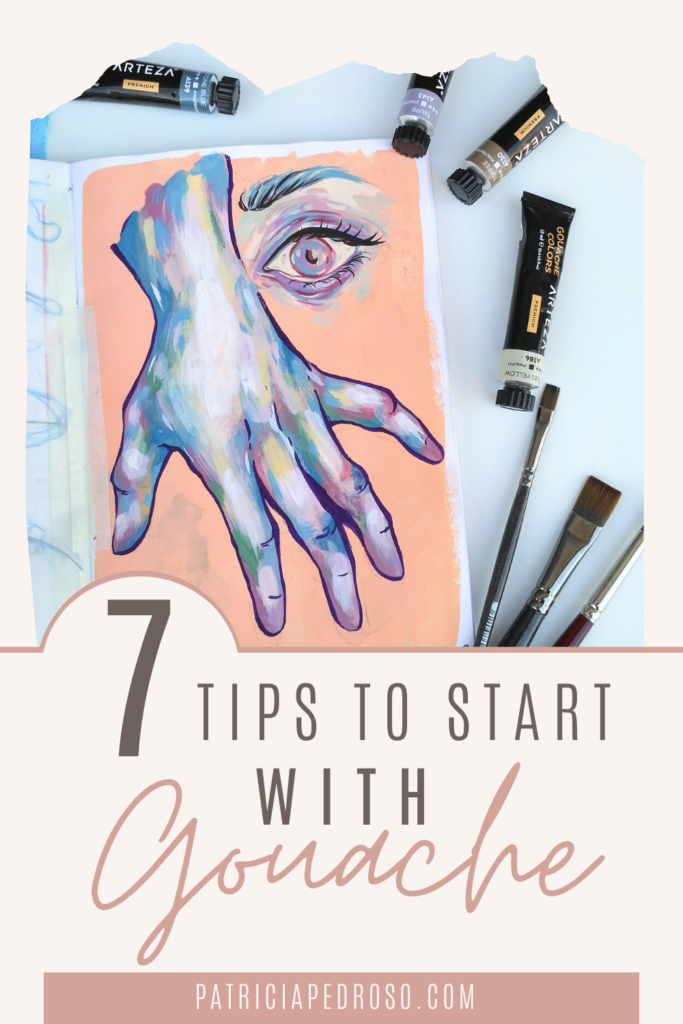
1. A bit about gouache
Gouache is a water-based medium like watercolour. This means that you have to mix it with a bit of water to use it, cause it is a thick paint.
There are two types: traditional gouache and acrylic-based gouache.
The difference?
The first is water-soluble, just like watercolour. It reactivates with water after dry.
If you paint on top of one layer it might get mixed with the colour you’re using.
This is the one I’ll be talking about, though I’m pretty sure they work very similarly.
The acrylic-based it’s more similar to acrylics, once dry it won’t reactivate again.
Some people prefer this one, I haven’t used it myself, but I guess it’s a lot like working with acrylics.
(Please, do correct me if I’m wrong)
There’s a video on my Youtube Channel where I say most of the things I have here, I’ll add it here in case you want to take a look at it.
2. Consistency is key
No, I’m not telling you to be consistent with the medium, though that would probably help you improve.
Gouache has a trick if you want to use it more seamlessly, and that’s the consistency of the paint.
You have to add just the right amount of water for it to flow nicely in your brushstroke but just enough so it’s still opaque.
I mean, gouache can also be used watered down as you’ll do with watercolour if you want, but that’s what watercolours are for.
Although, mixing both watered down & opaque techniques can give you interesting results!
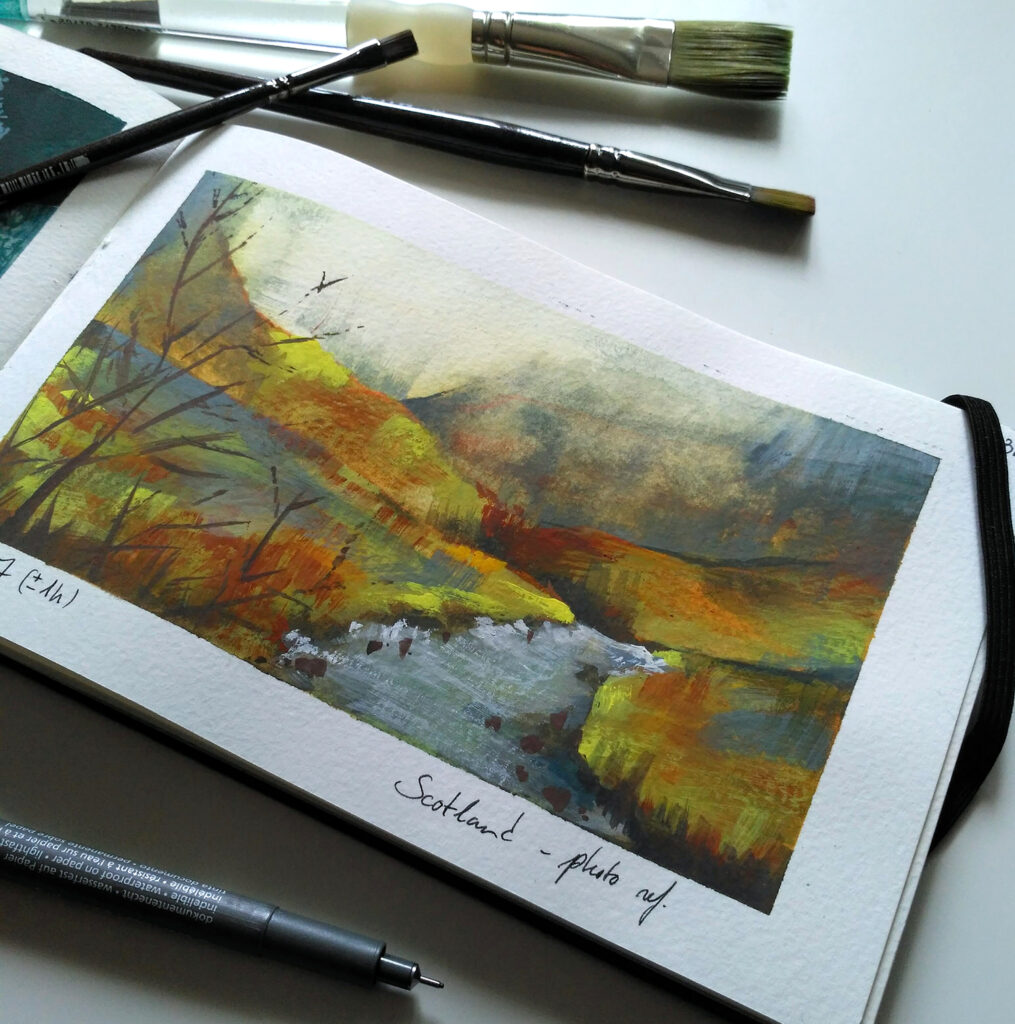
You will probably need to practice this more than a few times till you learn to control it, but once you do you’ll work so much better.
So, if the brush leaves chalky-like marks in the paper it means you need more water.
On another note, I’ve recently tried the Arteza 60 pack gouache set – you can see my complete and honest review here (and a discount code!) – and with it, I realised the consistency also varies with your brand of paint.
3. Layers & more Layers… Or maybe not?
Gouache is not usually very layer friendly. Teachers will even tell you something like “you can’t add more than X amount of layers with gouache“.
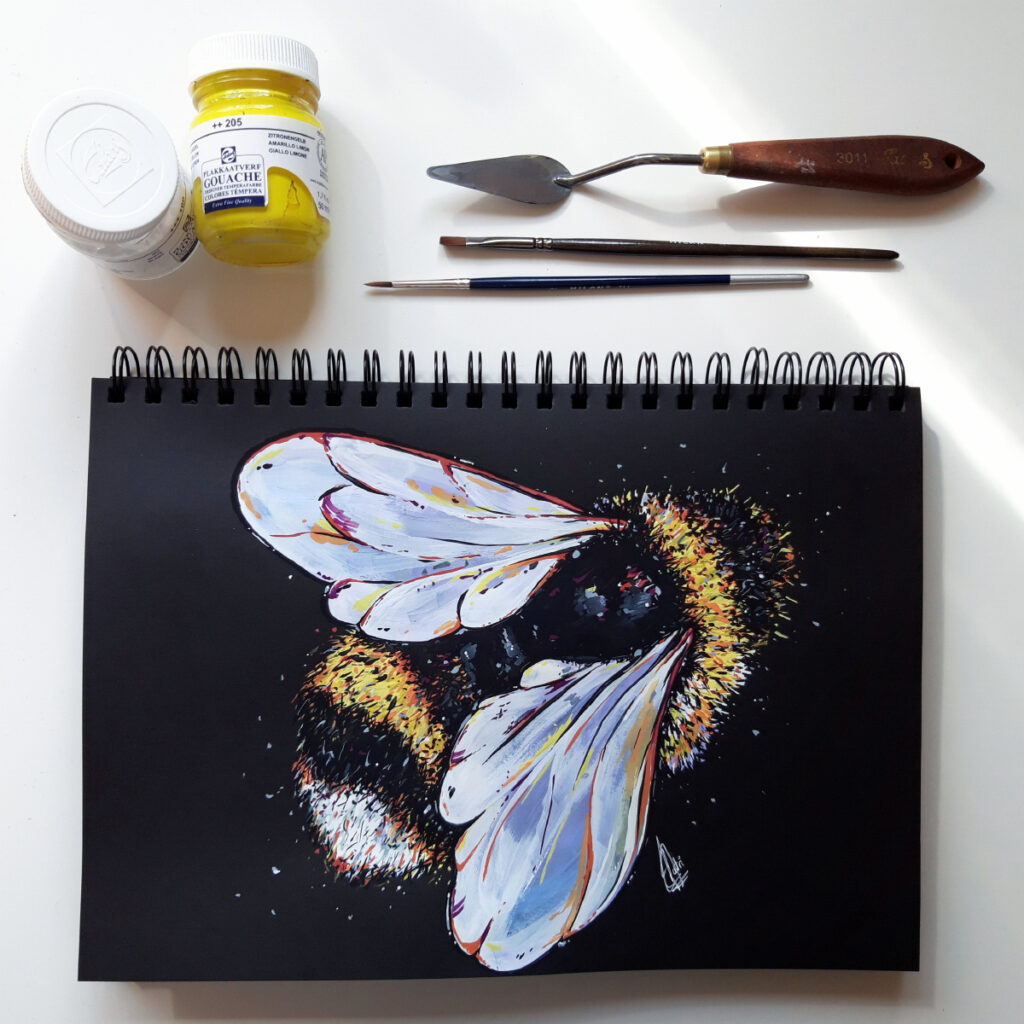
I’m not gonna tell you that, cause with time I’ve learned that it depends on many factors; the quality of the gouache, the type of paper, the consistency of the paint and maybe more.
But I will warn you that gouache can crack if you add too many layers of thick paint to the same spot.
And it would probably look bumpy in comparison to the rest of the piece, which never looks too good, right?
Though, you don’t need to be so afraid of this that you don’t even add layers.
That’s what my teachers did, make us afraid to use it…
Experiment and see, most of the times I found that it holds more than what I think.
Just be careful with layers in general, cause if you add a layer on top of another with your brush very wet – even if the layer is dry, unless is acrylic gouache – is will mess up & mix the colours.
Also, try not to roll your gouache paintings, because of the same reason – or you might have a nasty surprise when you unroll it.
As an extra resource, I wanted to add this video from Lena Rivo, a plein air gouache painter where she tells a bit about how she approaches gouache.
4. Getting the right colour
Another tricky thing about these type of paints is the colour.
Once dry, the colour of your paints changes quite a lot from what you see in your palette.
Usually, it gets much lighter with dark tones – and sometimes darker with light tones.
My advice is to always have a sheet of paper where you can try the colour and let it dry completely (it only takes like a minute).
This way you can always know if your colour is what you were looking for.
Once you’re used to working with gouache you’ll be more used to the change of the colour, making it easier to get your colours right even without testing them.
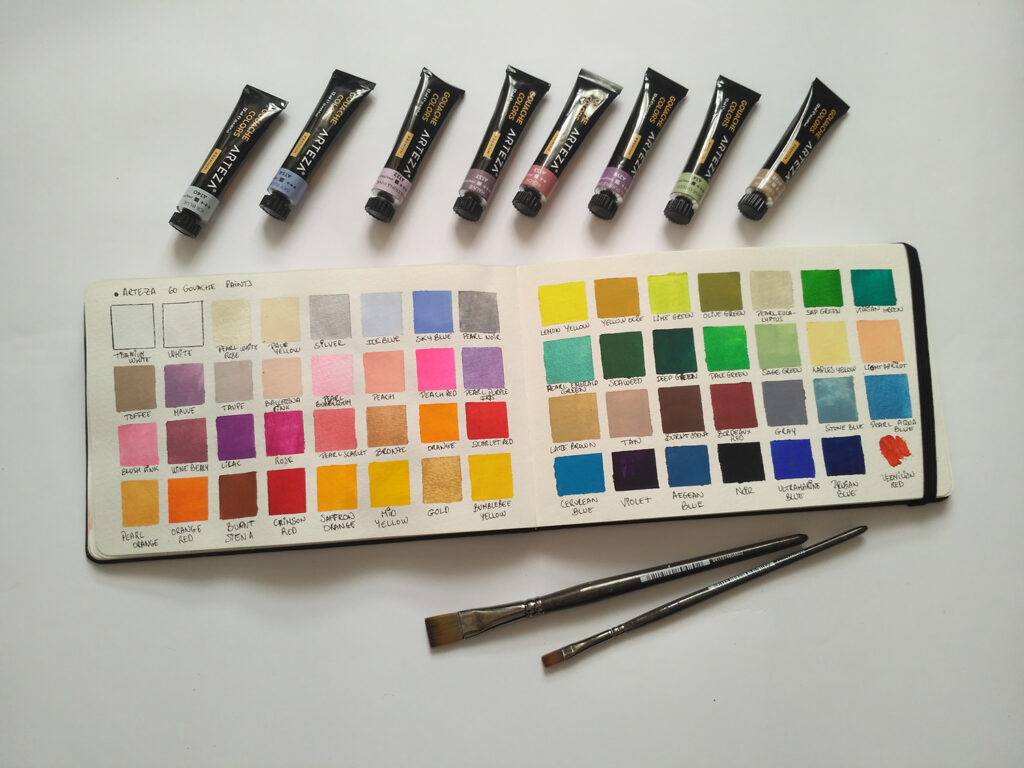
And this also depends on the gouache paint brand you’re using, it can change from one to another.
- Want to know more about different gouache brands and packs? Check out this really complete and helpfull article by The HomeMakers Journal to help you pick!
5. Rewet-able?
As I said before, you can rewet dry gouache.
This can work in your favour or not, so just experiment till you know how to take advantage of it.
Definitely avoid using a brush that’s too watery on top of a pre-existing dry layer if you don’t want to make a mess.
But there’s a really cool side effect from it – You can rewet the colours on your palette and use them again. This way you won’t waste any more gouache than what you have to, and you can keep working with the same colours later.
Also, gouache dries quite fast, so keeping a spray bottle with water is very handy.
Side note: I’m guessing this doesn’t work with acrylic gouache though.
6. Take care of your brushes
We should always be careful with our brushes, and if you come from using oils or acrylics you’re probably used to clean up your brushes right away when you finish painting.
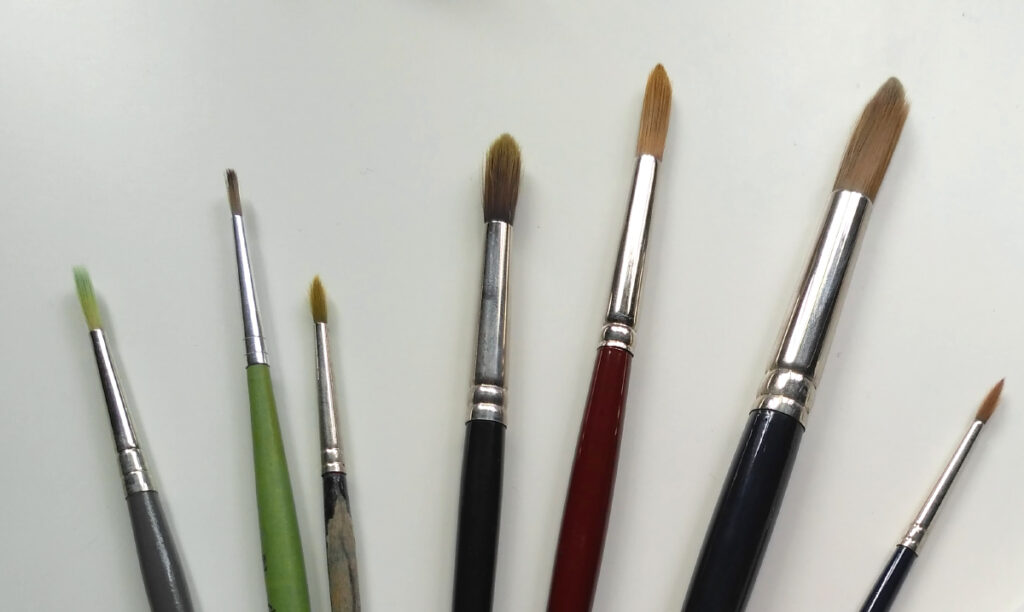
But if you’ve only used watercolours before maybe you leave them to dry after rinsing them a bit.
Watercolours do not damage the brushes that much.
But I find gouache a bit harsher on brushes than watercolour, so I would recommend you wash them off after you paint.
Do not leave them on water either!
You don’t need anything fancy, warm(ish) water and common soap always do the trick.
7. Last piece of advice
This one will be a bit of a mix and match of some things I’ve learned with gouache with time, most of them about colour.
Gouache can have really saturated and opaque colours, so it’s interesting to try & take it further.
FIRST – You can achieve really bright, unusual and saturated colours with gouache – or buy them already mixed on tubes.
My point is: take advantage of it!
Gouache always takes me out of my comfort zone when it comes to colour.

If you don’t believe me just take a look at the gorgeous colour palettes Audra Auclair achieves with gouache.
SECOND – Don’t be afraid of mixing. Get out of your comfort zone.
This can apply to different mediums: Instead of mixing black or white to darken/lighten a tone try something different.
For a green, for example, try using a tiny bit of yellow – even mixed with some white, you might be surprised with your results. It won’t dull your colours as much.
- Need some help with colour & colour mixing? Read my post on it – 13 Basic colouring tips that would drastically improve your art
THIRD – Try painting over coloured papers / black paper.
Gouache is the perfect medium to use on coloured paper cause it stands out a lot. I’ve tried it with black paper and I really love it!
And that’s it. I hope it helps you to begin your journey with gouache!
Do you know any other tips about gouache I haven’t mentioned? Do tell me in the comments below!

